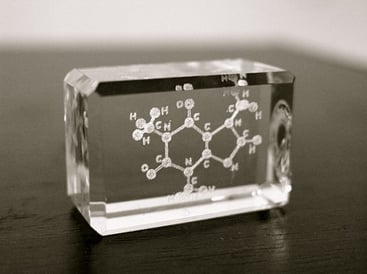.jpg?width=332&name=fiber-laser%20(1).jpg) If you're looking to invest in a laser machine, you will no doubt have seen a lot of information about various different types of lasers and the surfaces they can be applied to. Two of the main laser types that are often discussed are fiber and Co2 lasers, and we get a lot of enquiries from prospective customers different types of lasers and which they need to meet their requirements. In this blog, we delve into both to shed some light on what we mean by fiber and Co2.
If you're looking to invest in a laser machine, you will no doubt have seen a lot of information about various different types of lasers and the surfaces they can be applied to. Two of the main laser types that are often discussed are fiber and Co2 lasers, and we get a lot of enquiries from prospective customers different types of lasers and which they need to meet their requirements. In this blog, we delve into both to shed some light on what we mean by fiber and Co2.
What is a fiber laser?
To put it simply, fiber lasers use an optical fibre cable made of silicone, similar to those used to provide you your internet, to amplify and channel light through a lens and onto a surface to be engraved. The resulting laser beam is more precise than with other types of lasers because it is straighter and smaller, meaning that fiber lasers are well suited to marking and annealing metal surfaces. As such, fiber lasers are commonly used to apply serial numbers and codes onto metals for traceability and identification purposes.
What is a Co2 laser?
 A Co2 laser, or carbon dioxide laser, uses a small tube full of gas. Electricity is put through this tube to produce light, which is reflected with mirrors to produce a laser beam. Co2 lasers are able to mark a wide variety of non-metallic materials, including plastics, textiles, glass, acrylic, wood, and even stone. Due to this diversity, they are commonly seen in pharmacutical manufacturing as well as marking electrical components and building materials.
A Co2 laser, or carbon dioxide laser, uses a small tube full of gas. Electricity is put through this tube to produce light, which is reflected with mirrors to produce a laser beam. Co2 lasers are able to mark a wide variety of non-metallic materials, including plastics, textiles, glass, acrylic, wood, and even stone. Due to this diversity, they are commonly seen in pharmacutical manufacturing as well as marking electrical components and building materials.
Benefits of a fiber laser
One significant benefit of fiber laser machines is that they have a long service life (our N-lase systems have a mean time before failure of 100,000+ hours). They are smaller than their Co2 counterparts, meaning machines such as our Desktop can literally sit on your desk. Fiber lasers are also cheaper to run due to the fact that they consume less power. In the race of fiber Lasers vs. Co2 Lasers in thin materials there is simply no comparison; fiber is double to triple the speed.
Enjoying this article? Make sure you don't miss any others:

Benefits of a Co2 laser
Co2 lasers do have a lower price point than other types of lasers. That being said, their running costs are higher. The true benefit of a Co2 laser is in its versatility. The range of surfaces that you can engrave, anneal and cut with a Co2 laser far outweights that of a fiber alternative. Co2 technology is older, meaning that it is more of a 'known technology' - this results in greater degrees of predictability, and they generally produce better edge quality on plate stainless and aluminum workpieces.
Conclusion: which one is best for me?
There is no easy answer to that question, and as you have probably guessed from this blog, it is largely dependent on what you intend to use your laser for. While it is often tempted to go for the 'cheaper' option, Co2 lasers offset their higher running costs with their ability to mark a wide range of non-metal materials.
Still unsure? That's what our friendly sales team are here for!
Get in touch with them today to learn more about the different types of lasers we offer and how they can help you and your business:
Call: +44(0)1948660011
Email: info@needhamlaser.com




.jpg?width=332&name=fiber-laser%20(1).jpg) If you're looking to invest in a laser machine, you will no doubt have seen a lot of information about various different types of lasers and the surfaces they can be applied to. Two of the main laser types that are often discussed are fiber and Co2 lasers, and we get a lot of enquiries from prospective customers different types of lasers and which they need to meet their requirements. In this blog, we delve into both to shed some light on what we mean by fiber and Co2.
If you're looking to invest in a laser machine, you will no doubt have seen a lot of information about various different types of lasers and the surfaces they can be applied to. Two of the main laser types that are often discussed are fiber and Co2 lasers, and we get a lot of enquiries from prospective customers different types of lasers and which they need to meet their requirements. In this blog, we delve into both to shed some light on what we mean by fiber and Co2. A Co2 laser, or carbon dioxide laser, uses a small tube full of gas. Electricity is put through this tube to produce light, which is reflected with mirrors to produce a laser beam. Co2 lasers are able to mark a wide variety of non-metallic materials,
A Co2 laser, or carbon dioxide laser, uses a small tube full of gas. Electricity is put through this tube to produce light, which is reflected with mirrors to produce a laser beam. Co2 lasers are able to mark a wide variety of non-metallic materials, 